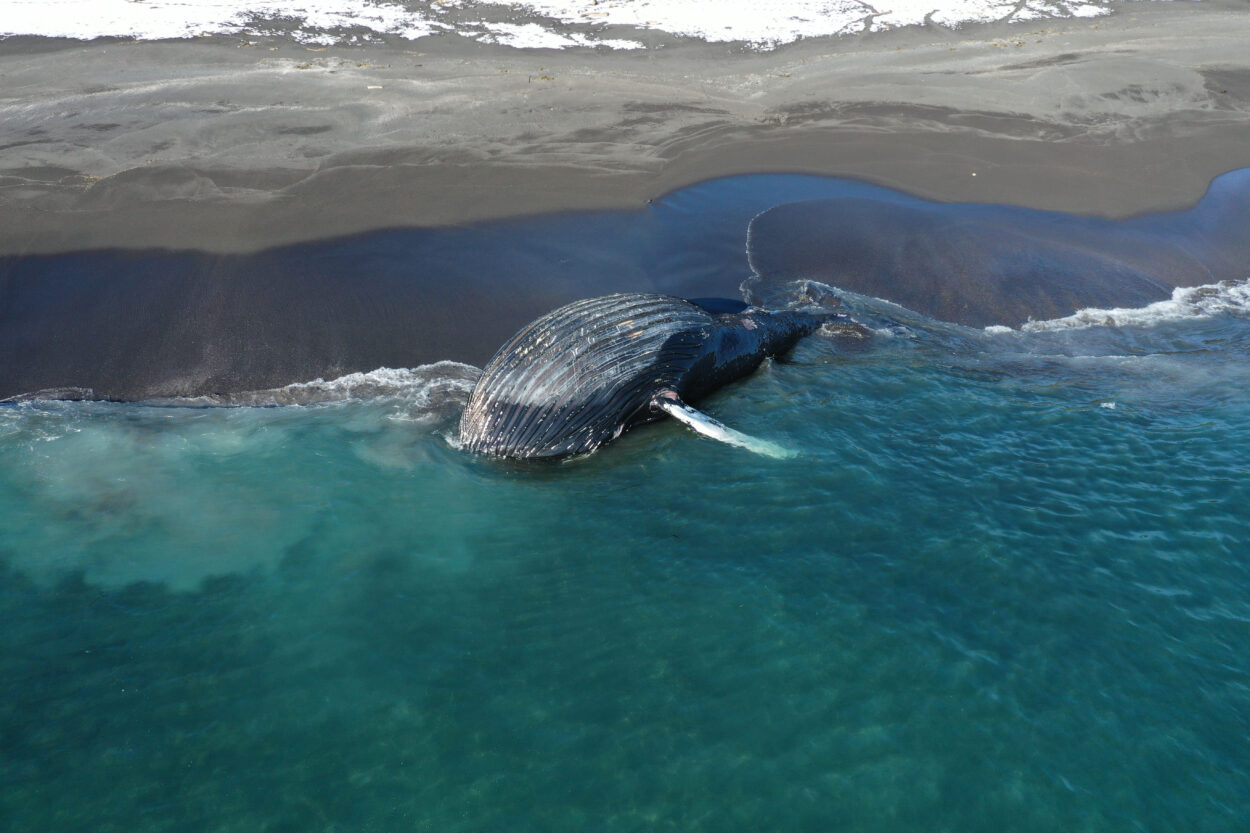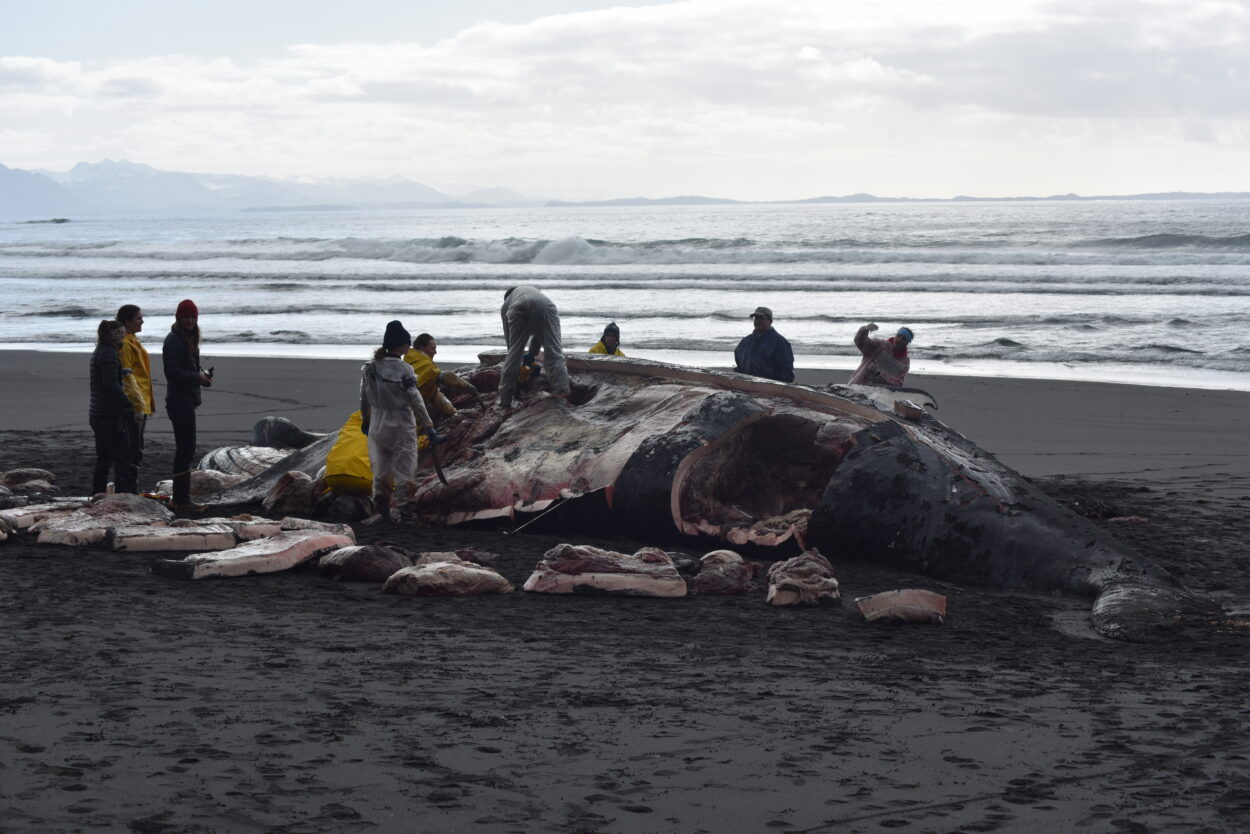
Sitka’s marine mammal stranding network headed to Kruzof Island on Thursday (3-18-21) to conduct its first necropsy on a dead humpback whale in five years. They wanted to learn more about why the whale died.
The Coast Guard reported the dead 47-foot female humpback to NOAA on Sunday evening. It had washed ashore on the south end of Kruzof Island.
Bad weather delayed the team until Thursday, and when they finally arrived, they found the whale in a different position.
“When we got out there, the whale had rotated 180 degrees and then rotated onto its stomach from all the surf and swell out there,” University of Alaska Southeast researcher Lauren Wild said. Wild is also the volunteer coordinator for Sitka’s stranding network.

She said that the whale had already started to decompose when they arrived. It’s a smell that she’s gotten used to over the years, but for newbies, it can be…shocking.
“It’s funny to watch people’s facial expressions change as they move towards this whale, and they just kind of have this look of horror like ‘Do I have to keep walking forward, or can I stop now?'” she said.
Despite the smell, the team of UAS researchers and local volunteers from the city, school district and Sitka Tribe of Alaska got to work cutting the whale open. It took five and a half hours and 10 people to take photos and notes, collect tissue samples, and examine the whale for signs of trauma.
“It takes a while and a lot of muscle power to cut through the blubber and then flense that back and peel it back and then cut through the muscle to access the inner organs,” Wild said.
Conducting a necropsy can be dangerous. If the whale is bloated, responders have to take care that it doesn’t explode when they cut it open, although that’s rare and easy to avoid, Wild said. Carcasses can also attract bears. And the scenes can be hectic, with lots of people working quickly with sharp tools. All of the responders have received specialized training from NOAA.
“You just have to be really careful especially because whales are really oily; the blubber is just really oily,” Wild said. “So as you start cutting, the animal’s just oozing oils, and so that makes things really slippery.”

Wild said whale necropsies in Sitka Sound are fairly uncommon. When they receive a notice of a dead whale, they can’t always get to it or sometimes it’s washed away by the time they do. But conducting necropsies is important because it can teach researchers about whales and any changes that might be happening in their environments.
“I like to think of a dead whale as kind of like a goldmine of opportunity, and there’s always information that can be gleaned from it,” Wild said. “It’s just a matter of trying to get as many people to help figure that out in the short amount of time that you have.”
As far as what killed this humpback, Wild said they didn’t find a ‘smoking gun.’ The whale looked healthy and its belly was full of fish–most likely herring. But they did find some evidence of blunt trauma. They sent samples off to the lab, and they’ll have to wait for the results to find out more.

To report a marine mammal stranding, you can call NOAA Fisheries Alaska marine mammal stranding hotline at 877-925-7773.
Erin McKinstry is a Report for America corps member.






























